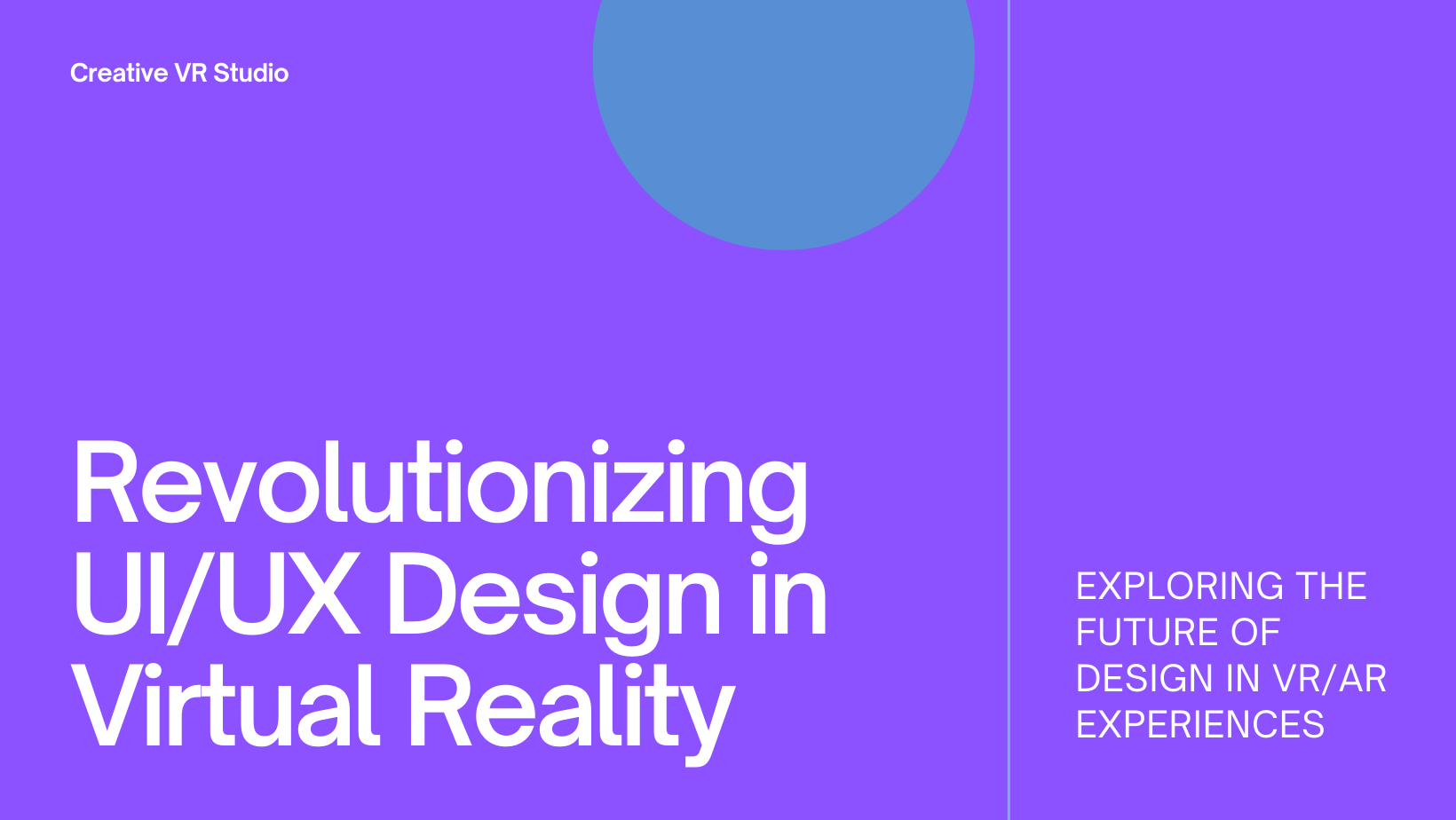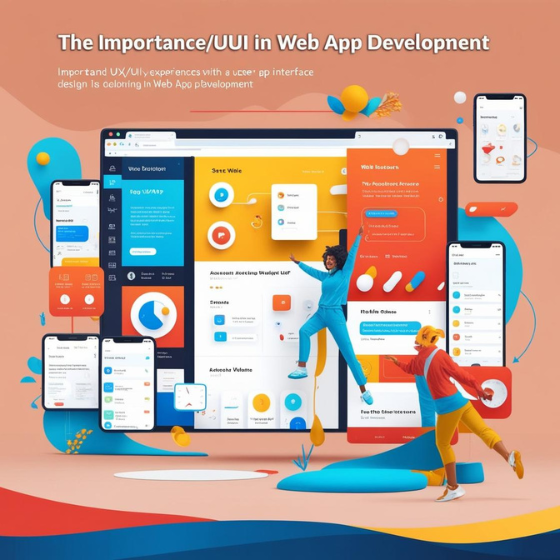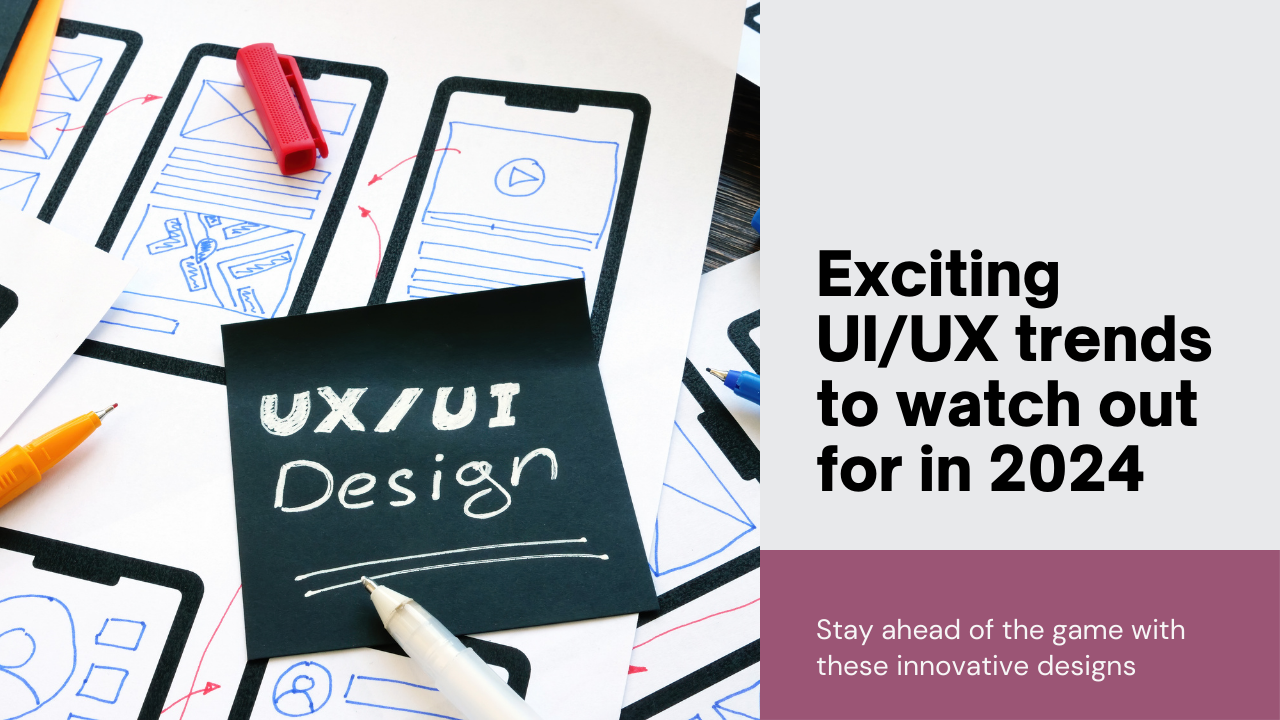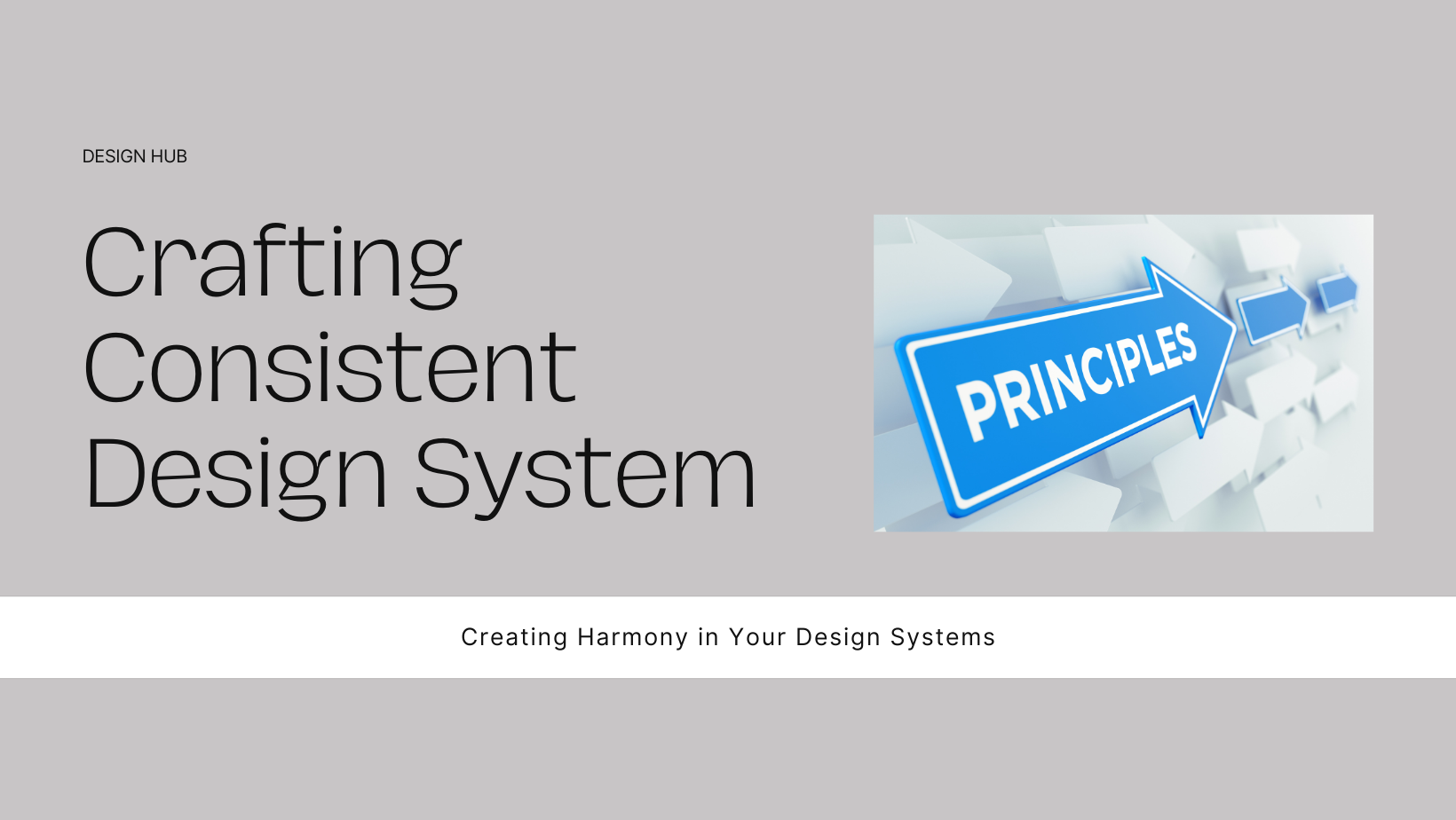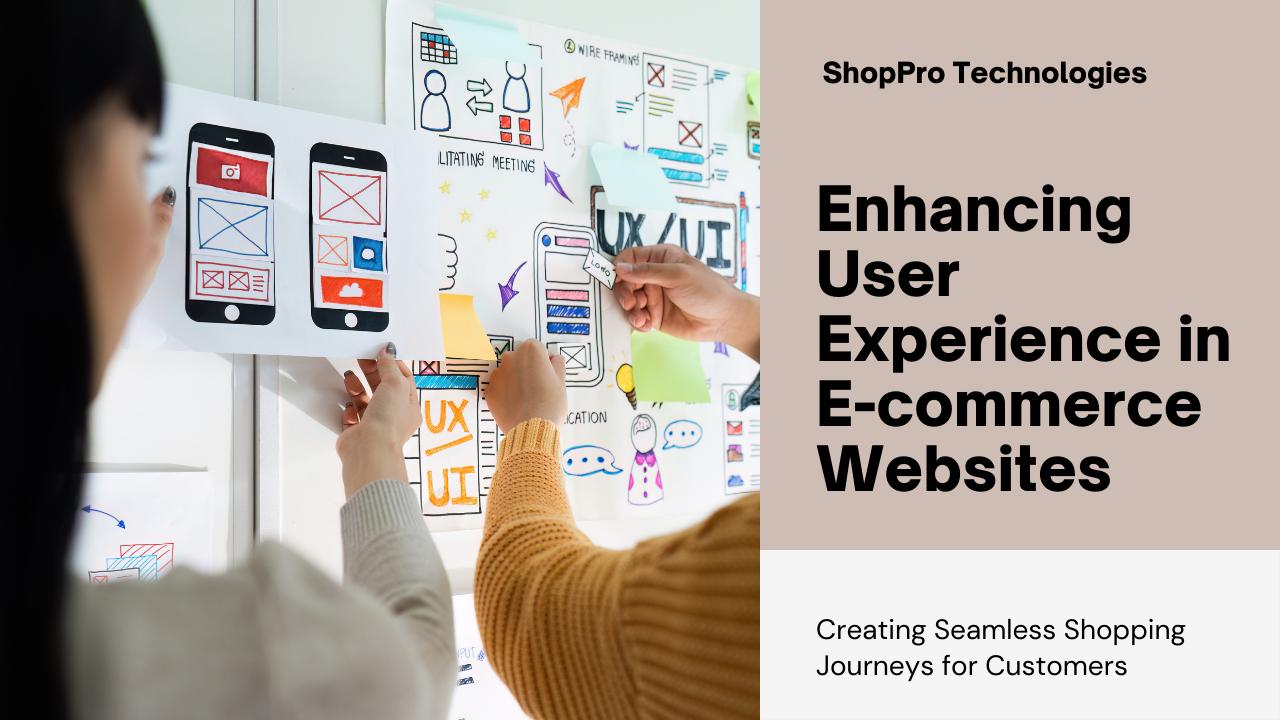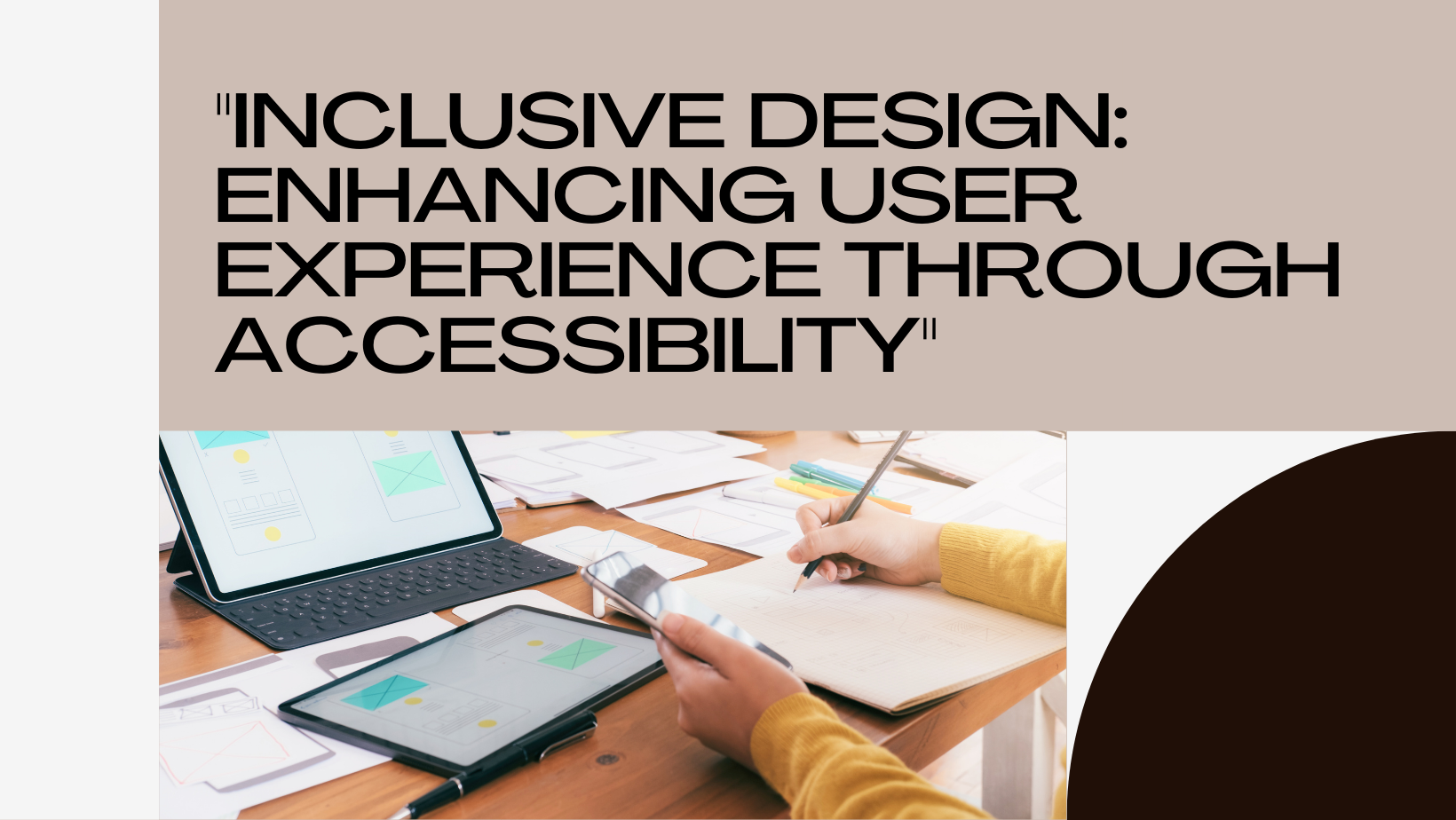Virtual Reality (VR) and Augmented Reality (AR) have transformed from niche technologies to mainstream sensations, promising to revolutionize the way we interact with digital content. The immersive experiences offered by VR and AR present unique challenges and opportunities for UI/UX designers. As these technologies continue to evolve, understanding how to design intuitive, engaging, and efficient user interfaces will be crucial for creating compelling VR and AR experiences. This blog explores the future of UI/UX design in VR and AR, highlighting key trends, challenges, and best practices.
Understanding VR and AR
Virtual Reality (VR): VR creates a completely immersive digital environment that replaces the real world. Users typically wear VR headsets, such as Oculus Rift or HTC Vive, to experience a 360-degree virtual world.
Augmented Reality (AR): AR overlays digital content onto the real world, enhancing the user’s perception of reality. AR can be experienced through devices like smartphones, tablets, and AR glasses such as Microsoft HoloLens and Magic Leap.
Key Trends in UI/UX Design for VR and AR
1. Spatial Interfaces
One of the most significant shifts in UI/UX design for VR and AR is the move from flat, 2D interfaces to spatial, 3D interfaces. Spatial interfaces leverage the three-dimensional space to create more immersive and intuitive interactions.
Examples:
- VR: In a VR environment, users can interact with objects by reaching out and touching them, mimicking real-world interactions.
- AR: AR applications can overlay information onto physical objects, allowing users to interact with digital content in their real environment.
2. Gesture-Based Interactions
Gesture-based interactions are becoming increasingly prevalent in VR and AR. These interactions use natural hand and body movements to control the interface, creating a more intuitive and immersive experience.
Examples:
- VR: Hand tracking technology, such as that used by Oculus Quest, allows users to manipulate virtual objects with their hands.
- AR: AR applications can use gestures like pinching, swiping, and tapping to interact with digital content.
3. Voice Commands
Voice commands are an essential component of the user interface in VR and AR. They provide a hands-free way to interact with the digital environment, making it more accessible and convenient.
Examples:
- VR: Users can navigate menus, control settings, and perform actions using voice commands in VR applications.
- AR: AR glasses, like Microsoft HoloLens, allow users to interact with digital content through voice commands, enabling a seamless experience.
4. Context-Aware Experiences
Context-aware experiences use the surrounding environment and user context to provide relevant and personalized interactions. This trend is particularly important in AR, where digital content is overlaid onto the real world.
Examples:
- VR: VR experiences can adapt based on user actions and preferences, creating a dynamic and personalized environment.
- AR: AR applications can provide information about nearby objects, locations, and people, enhancing the user’s real-world experience.
Challenges in UI/UX Design for VR and AR
1. Usability and Comfort
Designing for usability and comfort is a significant challenge in VR and AR. Extended use of VR headsets can cause discomfort, and poorly designed AR interfaces can lead to confusion and frustration.
Solutions:
- VR: Ensure that the VR environment is comfortable and that interactions are intuitive. Use familiar design patterns and provide clear instructions.
- AR: Design AR interfaces that are easy to understand and interact with. Avoid clutter and ensure that digital content enhances, rather than distracts from, the real world.
2. Spatial Awareness
Users need to maintain spatial awareness to navigate VR and AR environments effectively. This can be challenging, especially for users who are new to these technologies.
Solutions:
- VR: Provide visual and auditory cues to help users orient themselves within the VR environment. Use teleportation or smooth locomotion to allow users to move comfortably.
- AR: Ensure that digital content is anchored to the real world and that users can easily distinguish between virtual and physical objects.
3. Interaction Design
Designing interactions for VR and AR requires a different approach compared to traditional interfaces. Users need to be able to interact with the digital environment naturally and intuitively.
Solutions:
- VR: Use natural gestures and movements for interactions. Ensure that virtual objects respond realistically to user actions.
- AR: Design interactions that integrate seamlessly with the real world. Use gestures and voice commands to control digital content.
Best Practices for UI/UX Design in VR and AR
1. Prioritize User Comfort
User comfort is paramount in VR and AR design. Ensuring that users can interact with the environment without discomfort is crucial for creating a positive experience.
Tips:
- Minimize Motion Sickness: Use techniques like teleportation and fixed reference points to reduce motion sickness in VR.
- Ergonomic Design: Design interfaces that are easy to reach and interact with, reducing physical strain.
2. Use Familiar Design Patterns
Using familiar design patterns helps users navigate and interact with the VR or AR environment more easily. Leveraging existing knowledge and behaviors makes the experience more intuitive.
Tips:
- Consistent Interactions: Ensure that similar actions produce similar results across the interface.
- Visual Cues: Use visual cues like buttons, icons, and animations to guide users.
3. Provide Clear Feedback
Clear feedback is essential for helping users understand the results of their actions. Providing immediate and understandable feedback improves the user experience.
Tips:
- Visual Feedback: Use animations, color changes, and icons to indicate actions and states.
- Auditory Feedback: Incorporate sounds to provide additional context and feedback for user actions.
4. Test with Real Users
Testing with real users is crucial for identifying issues and improving the UI/UX design. Gathering feedback from actual users ensures that the design meets their needs and expectations.
Tips:
- User Testing: Conduct user testing sessions to observe how users interact with the VR or AR environment.
- Iterative Design: Use an iterative design process to refine the interface based on user feedback.
Future Prospects of UI/UX Design in VR and AR
1. Advanced AI Integration
Artificial Intelligence (AI) will play a significant role in the future of VR and AR UI/UX design. AI can create more personalized and adaptive experiences, enhancing the overall user experience.
Examples:
- Personalized Experiences: AI can analyze user behavior and preferences to provide personalized content and interactions.
- Natural Language Processing: AI-driven natural language processing can improve voice command recognition and interaction.
2. Enhanced Realism
Advances in technology will lead to more realistic and immersive VR and AR experiences. Improved graphics, haptics, and sensory feedback will make interactions feel more natural.
Examples:
- Haptic Feedback: Advanced haptic feedback systems can simulate the sense of touch, enhancing the realism of interactions.
- Realistic Graphics: Higher resolution displays and better rendering techniques will create more lifelike environments.
3. Wider Adoption
As VR and AR technologies become more accessible and affordable, their adoption will increase. This will drive demand for well-designed, intuitive interfaces that cater to a broader audience.
Examples:
- Consumer VR and AR: More affordable VR headsets and AR glasses will make these technologies accessible to mainstream consumers.
- Enterprise Applications: Businesses will adopt VR and AR for training, simulation, and other applications, requiring specialized UI/UX design.
Conclusion
The future of UI/UX design in VR and AR is exciting and full of potential. By understanding the unique challenges and opportunities presented by these technologies, designers can create intuitive, engaging, and effective interfaces. As VR and AR continue to evolve, prioritizing user comfort, using familiar design patterns, providing clear feedback, and testing with real users will be essential for success. At Sodio Technologies, we are at the forefront of VR and AR design, creating innovative and intuitive interfaces that enhance the user experience. Contact us today to learn how we can help you leverage VR and AR for your digital products.
